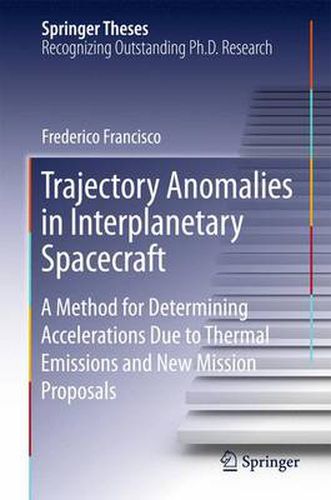Readings Newsletter
Become a Readings Member to make your shopping experience even easier.
Sign in or sign up for free!
You’re not far away from qualifying for FREE standard shipping within Australia
You’ve qualified for FREE standard shipping within Australia
The cart is loading…






This title is printed to order. This book may have been self-published. If so, we cannot guarantee the quality of the content. In the main most books will have gone through the editing process however some may not. We therefore suggest that you be aware of this before ordering this book. If in doubt check either the author or publisher’s details as we are unable to accept any returns unless they are faulty. Please contact us if you have any questions.
This thesis presents fundamental work that explains two mysteries concerning the trajectory of interplanetary spacecraft. For the first problem, the so-called Pioneer anomaly, a wholly new and innovative method was developed for computing all contributions to the acceleration due to onboard thermal sources. Through a careful analysis of all parts of the spacecraft Pioneer 10 and 11, the application of this methodology has yielded the observed anomalous acceleration. This marks a major achievement, given that this problem remained unsolved for more than a decade. For the second anomaly, the flyby anomaly, a tiny glitch in the velocity of spacecraft that perform gravity assisting maneuvers on Earth, no definitive answer is put forward; however a quite promising strategy for examining the problem is provided and a new mission is proposed. The proposal largely consists in using the Galileo Navigational Satellite System to track approaching spacecraft, and in considering a small test body that approaches Earth from a highly elliptic trajectory.
$9.00 standard shipping within Australia
FREE standard shipping within Australia for orders over $100.00
Express & International shipping calculated at checkout
This title is printed to order. This book may have been self-published. If so, we cannot guarantee the quality of the content. In the main most books will have gone through the editing process however some may not. We therefore suggest that you be aware of this before ordering this book. If in doubt check either the author or publisher’s details as we are unable to accept any returns unless they are faulty. Please contact us if you have any questions.
This thesis presents fundamental work that explains two mysteries concerning the trajectory of interplanetary spacecraft. For the first problem, the so-called Pioneer anomaly, a wholly new and innovative method was developed for computing all contributions to the acceleration due to onboard thermal sources. Through a careful analysis of all parts of the spacecraft Pioneer 10 and 11, the application of this methodology has yielded the observed anomalous acceleration. This marks a major achievement, given that this problem remained unsolved for more than a decade. For the second anomaly, the flyby anomaly, a tiny glitch in the velocity of spacecraft that perform gravity assisting maneuvers on Earth, no definitive answer is put forward; however a quite promising strategy for examining the problem is provided and a new mission is proposed. The proposal largely consists in using the Galileo Navigational Satellite System to track approaching spacecraft, and in considering a small test body that approaches Earth from a highly elliptic trajectory.